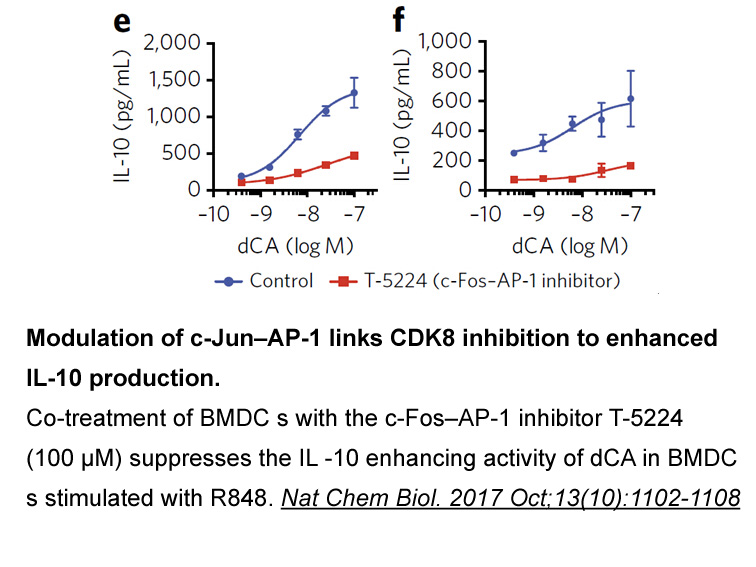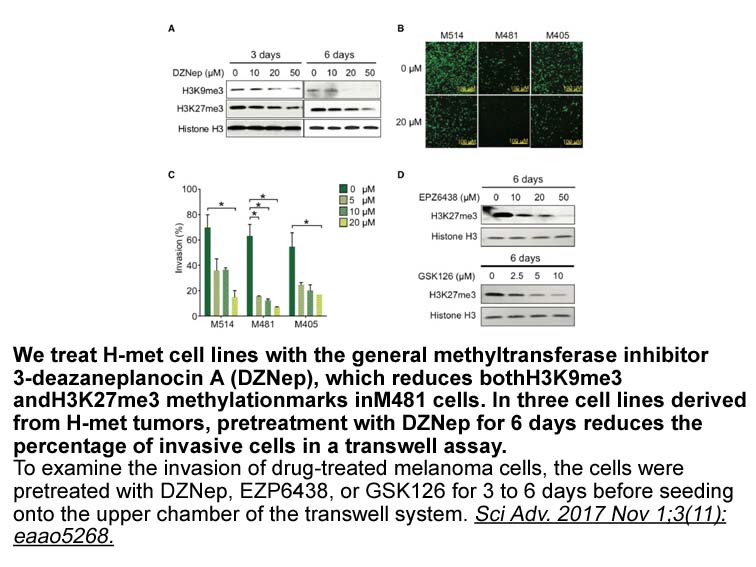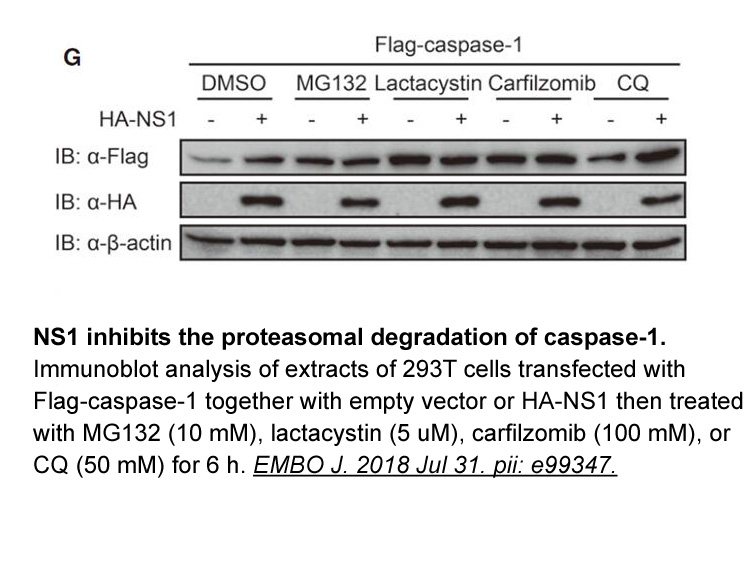Archives
- 2025-12
- 2025-11
- 2025-10
- 2025-09
- 2025-03
- 2025-02
- 2025-01
- 2024-12
- 2024-11
- 2024-10
- 2024-09
- 2024-08
- 2024-07
- 2024-06
- 2024-05
- 2024-04
- 2024-03
- 2024-02
- 2024-01
- 2023-12
- 2023-11
- 2023-10
- 2023-09
- 2023-08
- 2023-07
- 2023-06
- 2023-05
- 2023-04
- 2023-03
- 2023-02
- 2023-01
- 2022-12
- 2022-11
- 2022-10
- 2022-09
- 2022-08
- 2022-07
- 2022-06
- 2022-05
- 2022-04
- 2022-03
- 2022-02
- 2022-01
- 2021-12
- 2021-11
- 2021-10
- 2021-09
- 2021-08
- 2021-07
- 2021-06
- 2021-05
- 2021-04
- 2021-03
- 2021-02
- 2021-01
- 2020-12
- 2020-11
- 2020-10
- 2020-09
- 2020-08
- 2020-07
- 2020-06
- 2020-05
- 2020-04
- 2020-03
- 2020-02
- 2020-01
- 2019-12
- 2019-11
- 2019-10
- 2019-09
- 2019-08
- 2018-07
-
br Materials and methods br
2019-11-21

Materials and methods Results Discussion We confirmed the published cDNA and protein sequence of feline CSF-1R and stably cloned the cat receptor into the Ba/F3 cell line. Activation of feline CSF-1R by recombinant human CSF-1 was previously tested by Woolford et al. [14]. Expression of onc
-
br The amygdala complex The amygdala complex is composed
2019-11-21

The amygdala complex The amygdala complex is composed of distinct nuclei and subdivisions including the lateral (LA), basolateral (BL), and basomedial (BM) amygdala; the medial (Imp), lateral paracapsular (lpc), and main intercalated cell cluster (IN); and the lateral and medialcentral amygdala (
-
Future analysis could consider using
2019-11-20

Future analysis could consider using fixed effects also with the level set field, , in order to investigate which covariates explain the classification, a feature of the proposed model that we have not yet investigated. Further, multi-type point patterns may also be analyzed with the proposed model
-
Among the down regulated genes were several of interest
2019-11-20

Among the down-regulated genes were several of interest. Coronin2a (Coro2a), a component of the nuclear receptor co-repressor complexes, contributes to de-repression of inflammatory response genes (Huang et al., 2011). Mill1, an MHC family member expressed in hair follicles, represses wound healing
-
Quantifying diffusion is greatly complicated by
2019-11-20

Quantifying GNE-477 is greatly complicated by the ubiquitous unevenness of soil surfaces and related water films, which introduce a large uncertainty into size (area) and quality of contact between the soil surface and the membrane, the problem being particularly substantial in well aggregated and c
-
A number of chemical strategies have been
2019-11-20

A number of chemical strategies have been developed to design activatable optical imaging probes and have been summarized in several excellent reviews 11., 12., 13., 14., 15.. Fluorogenic enzyme substrates are one of the most explored activatable probe types for enzyme detection. These probes contai
-
The RING domain was previously considered sufficient
2019-11-20

The RING domain was previously considered sufficient to confer ubiquitination by RING-type E3 ligases. However, recent reports have shown that sequences closest to the RING domain are also important in E3 ligase function. Residues like Tyr193 in RNF4 [40], Phe296 and Arg294 in BIRC7 [31], and Lys65
-
To date little is known about the
2019-11-20

To date, little is known about the regulation of PCD through phytocystatin inhibitory activity. Inhibitors that may regulate leaf senescence (Huang et al., 2001, Tajima et al., 2011) or may inhibit PCD induced by abiotic factors, such as mechanical tissue damage or oxidative stress caused by cold (B
-
Our conclusion is in disagreement
2019-11-20

Our conclusion is in disagreement with that of a recent paper by Park et al. [10], which suggests that nitric oxide (NO) inhibition of VHL recruitment occurs by nitrosylation of the 520 cysteine in HIF-1α, and that SNAP does not directly inhibit hydroxylation of HIF peptide by HPH-2. Although this d
-
First we synthesized inhibitor following
2019-11-20

First, we synthesized inhibitor following the patent procedure reported by Shewchuk et al. to provide its first complete characterization (see ). Two different synthetic approaches were used to obtain compounds –. The first method relied on the alkylation of the common 5-phenol-2,4-diaminopyrimidine
-
A phenylacetic acid derivative discovered in a high throughp
2019-11-20

A phenylacetic Rizatriptan Benzoate receptor derivative (), discovered in a high throughput screen for CRTH2, inhibited the binding of H-PGD to CRTH2 receptors on 293 cells with an IC of 0.010μM, and inhibited the binding of H-PGD to DP receptors with an IC of only 8.3μM (). Compound also inhibit
-
Betamethasone synthesis To further explore whether it is the
2019-11-19

To further explore whether it Betamethasone synthesis is the bisulfite conversion or the HRM amplification that limited the efficiency of amplification of DNA of DNA levels below 1 ng, we performed serial dilutions of bisulfite-modified samples prepared with 1 ng of input genomic DNA. Four differen
-
br Synthesis and mechanism of fluorescent
2019-11-19

Synthesis and mechanism of fluorescent DNA-CuNMs Application of fluorescent DNA-CuNMs Summary and conclusions In summary, we introduce recent research progress in the synthesis and various applications of DNA-CuNMs. DNA-CuNMs with novel catalytic, electrical and optical properties can be ob
-
Finally this study described that the lead compound acted as
2019-11-19

Finally, this study described that the lead BRD 7389 (1) acted as an efficient alkylating agent for the G4 structure in addition to the previously reported T-T mismatch structure. The shortcoming of probe (1) is the lack of a structure selectivity, but that can be overcome by changing the acridine
-
By stratifying EOC cell lines according to their EMT
2019-11-19

By stratifying EOC cell lines according to their EMT stages, we observed a significant higher expression of DDR1 in the epithelial-like cell lines compared to low or undetectable DDR1 in mesenchymal-like cell lines. Similar trend was observed in the tumour samples, with the lowest expression of DDR1
14359 records 916/958 page Previous Next First page 上5页 916917918919920 下5页 Last page